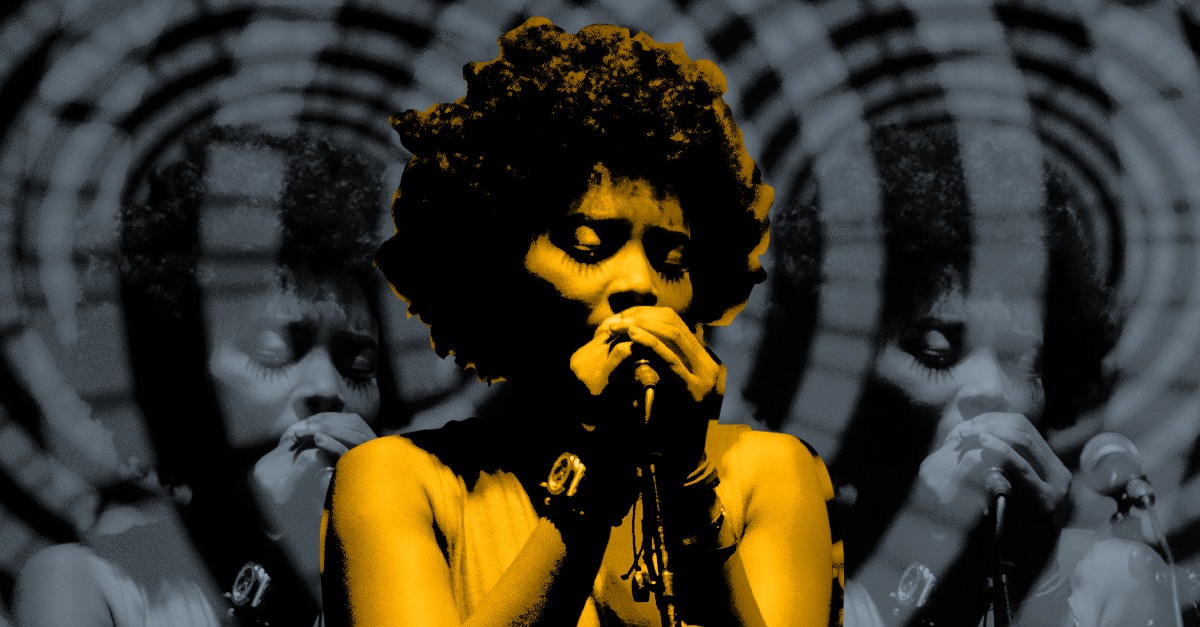
What is K Pop? 5 Music Production Tips for Making K-Pop

K-Pop music is a worldwide phenomenon.
While the pop music genre was pioneered during the postwar boom in Europe and the United States, new, global takes on pop are constantly revolutionizing the sound and market for popular music.
Alongside Latin Pop, K-Pop is one of the fastest-growing global forms of pop with an audience that grows larger and more passionate every year.
So what is K-Pop? Where does it come from, and who are its most influential artists?
And perhaps more importantly, what does it take to get the sound of K-Pop in your music?
In this article, I’ll break down the basics of the genre, outline the hallmarks of its sound and suggest five production techniques to help you make it yourself.
Let’s get started.
What is K-Pop?
K-Pop, short for Korean Pop music, is a genre that originated from South Korea and has since swept across the globe, leaving a significant impact on music and culture worldwide. It’s characterized by a vibrant mix of catchy melodies, high-energy dance routines, and meticulously produced music videos.
While the term “K-Pop” is primarily associated with music, it encompasses a broader cultural phenomenon including fashion, film, and television, all driven by the South Korean entertainment industry.
The genre is known for its fusion of various musical genres. At its core, it is deeply rooted in American pop music.
But, it’s not unusual to find elements of rock, jazz, hip-hop, R&B, reggae, electronic dance music, and even traditional Korean music woven into its fabric.
This eclectic mix gives K-Pop its unique and universally appealing sound.

This YouTube Original dives deep into the history of K-Pop.
But, it isn’t defined solely by its sound, much of K-Pop’s rise to mainstream prominence lies in its visual aesthetics.
Beyond music, groups usually feature synchronized dance routines and polished, fashionable aesthetics.
Their music videos are known for using cinematic, elaborate sets and intricate choreography.
This has led to what’s called “idol” culture in K-Pop, where its biggest artists become larger-than-life icons and up-and-comers train extensively to develop their skills as they bid to become the next big idol.
It’s common for “idol” prospects to move away from home at young ages to train at live-in academies that prepare them with the music, dance and fashion needed to achieve idol status.
The evolution of K-Pop
Understanding K-Pop requires looking into its decades long evolution. A journey marked by continuous reinvention, cultural fusion and global influence.
Let’s take a trip through time and explore the transformation of the genre over the years.
The early years
The foundation of modern K-Pop can be traced back to the early 1990s with the debut of Seo Taiji and Boys, a group often hailed as the pioneers of K-Pop.
Their music blended sonic inspiration and aesthetics from American rap and R&B, 90s pop boy bands, and 90s nu-metal combined with Korean lyrics.
The unique fusion of genres marked a turning point in the Korean music scene and set a new trend for incorporating global music styles.
Rise of idol culture in the 2000s
The 2000s witnessed the rise of idol groups such as TVXQ, Super Junior, Girls’ Generation, and Big Bang.
These idol groups grew into much larger troupes of singers, dancers and lead personalities who could sing, dance and play an onstage persona simultaneously.
Their music, often created by a team of in-house producers, further diversified the genre by combining elements of electronic, dance, and R&B with catchy pop hooks.
During this period, the Korean Wave, or “Hallyu”, began to gain momentum, with Korean entertainment and culture spreading across Asia.
Going global in the 2010s
The 2010s marked a significant shift for K-Pop as it exploded onto the global stage.
Groups like EXO, BTS, and Blackpink, among others, found enormous success beyond Asia, reaching audiences in the West.
Notably, Psy’s “Gangnam Style” became a viral sensation, shattering language barriers and becoming the first YouTube video to reach one billion views.
But it was BTS that truly took K-Pop global.
Their success on international charts, combined with their strong presence on social media platforms, helped them cultivate a dedicated international fan base.
This period also saw K-Pop artists take back creative control over their music, with groups like BTS and Stray Kids being heavily involved in the songwriting and production process.
2020s and beyond
Today, K-Pop has firmly established its presence on the global stage, influencing music trends worldwide.
It continues to adapt and innovate, absorbing musical styles from across the globe.
So, watch for more genre-blending, as groups explore elements of jazz, Latin and reggae.
The sound of K-Pop
K-Pop’s uniqueness largely stems from its distinct yet diverse musical characteristics.
By blending a variety of genres and musical techniques, K-Pop has crafted a sound that is both familiar and innovative.
Let’s delve into the basic music theory behind this phenomenon and analyze the different elements that shape the K-Pop sound.
Musical fusion
At its heart, K-Pop is a genre of fusion. It blends traditional pop music elements with a wide array of other genres, including rock, jazz, R&B, hip-hop, reggae, and electronic dance music.
In K-Pop, fusion manifests itself in many ways. One K-Pop song could contain a rap verse, an R&B chorus, a rock guitar solo and a reggaeton beat all built over a gospel chord progression.
While the musical content typically will follow high-quality production values, the eclectic mix of genres is what gives K-Pop its characteristic versatility.
Chord progressions and scales
In terms of music theory, K-Pop isn’t afraid to get creative.
While many songs rely on the tried-and-true pop music chord progressions (such as the classic I-V-vi-IV), K-Pop also ventures into more complex jazz and R&B progressions that add unexpected twists and turns to a song.
You’ll often hear ii-V-I turnarounds and the use of chord extensions to make chord progressions richer and more harmonically complex.
Moreover, K-Pop frequently makes use of different scales, including major, minor, and pentatonic scales, often switching between them to create dynamic and emotive melodies.
Rhythm and tempo
Rhythm in K-Pop is often driven by the genre’s pop and dance-oriented nature.
Its upbeat tunes will often feature four-on-the-floor disco drum patterns, whereas more lowkey tunes will use rock, hip-hop and electronic sensibilities in their drum programming.
As with most pop tunes, use of hip-hop-inspired triplet syncopation is frequently used to create a sense of off-kilter interest and excitement.
Instrumentation
Instrumentation in K-Pop is incredibly diverse, reflecting the genre’s fusion nature.
Electronic sounds are prominent, with synthesizers, drum machines, and digital audio workstations (DAWs) being commonly used in production.
However, K-Pop also incorporates a wide array of acoustic instruments, such as guitars, pianos, and strings.
Some songs may even feature traditional Korean instruments, such as the gayageum or haegeum, adding a Korean twist to the pop sound.
Vocals and harmonies
Vocal production is easily the most crucial component of K-Pop’s sound.
Given that many K-Pop acts are groups, harmonies and vocal layering are key elements.
The members’ unique vocal timbres often blend to create a rich, full sound, with their individual parts intricately woven together.
Modern K-Pop artists tend to sing in a fairly similar style to American mainstream pop singers, but their versatility lets them lean into rapped hip-hop-inspired verses and spoken word inspired by house and EDM music.
High notes and vocal belting are also commonly used for dramatic effect and emotional impact at a song’s peak.
Whereas, various production effects are used on spoken word sections to give these verses a certain feel and aesthetic.
Five K-Pop production tips for producers
Producing a K-Pop track essentially begins with a mix of songwriting and beat-making.
For major acts, this is often handled by a team of in-house and sometimes international producers and songwriters.
These teams collaborate to craft tracks that align with a group’s image and the concept of the album.
K-Pop production requires an understanding of its unique genre-blending conventions, a mastery of music production and technology plus a willingness to push the envelope.
If you dream of one day producing a K-Pop hit, here’s a few tips to keep in mind as you hone your music production skills.
1. Master the art of fusion
K-Pop is all about blending genres. Its producers often find themselves combining elements from pop, hip-hop, R&B, electronic, and even rock in a single track.
So, don’t shy away from mixing contrasting musical elements in your tracks.
Learn what goes into music production for different genres and you’ll be more confident arranging various styles into your tracks.
Learning how to add beat switches, tastefully playing the right chords and rhythms throughout a song and adding surprise elements are why the best K-Pop songs stand out.
2. Prioritize group dynamics
Due to K-Pop’s focus on group dynamics, songs often feature a diverse range of vocal parts—from rapping to belting high notes—which need to be distributed among the group members based on their roles and strengths.
This means you’ll need to craft tracks that highlight the strengths of each member in your vocal troupe and allow for the harmonious interplay of different vocal parts.
3. Invest in visual elements
Remember, K-Pop is as much about the visuals as it is about the music. Think about how your track will translate to a live performance or a music video.
How you produce the music will inform how you incorporate elements that make for interesting choreography or visual effects.
4. Be lyrically diverse
Although most K-Pop songs are primarily in Korean, they often include phrases or choruses in English or other languages.
This is why K-Pop songs have become so much more accessible to international audiences.

Peggy takes us through her process for writing lyrics.
5. Stay current, but be timeless
While it’s essential to stay on top of current music trends, try to create songs that will remain enjoyable even years down the line.
The most successful K-Pop songs manage to capture the zeitgeist while retaining a timeless quality.
Production tools and processes in K-Pop
Producing K-Pop means having a strong grasp of modern music production tools.
Given the genre’s heavily electronic nature, producing it requires making use of synthesizers, drum machines, and DAWs.
Sampling is also frequently used, either to incorporate unique sounds or to add layers to a song.
Auto-Tune and pitch correction are often employed, not just as corrective tools but also as creative effects to lend a particular vibe to a track.
MIDI programming plays a significant role in creating the intricate electronic elements and lush soundscapes common in many K-Pop songs.
Having a solid understanding of music production tools and processes for producing, recording and mixing pop music is crucial for creating this kind of music.
K-Pop crash course
Producing pristine pop music of any kind takes dedication and practice. K-Pop is no exception.
Whether you want to become a legendary producer in the studio or cement yourself as a pop icon, it won’t happen without time spent studying music, modern production tools and building your music career.
To make it in K-Pop you must be multi-talented and have the intuition to understand what is current and what makes songs timeless and catchy.
You don’t have to go it alone in your study of pop music—learn the history of electronic music, hip-hop, 90s R&B, get help and advice on your productions or find a vocal coach to take your voice to new levels.
By getting started in your DAW and learning how to record, sing and produce music you’ll be on your way to producing a massive K-Pop hit.
Gear guides, tips, tutorials, inspiration and more—delivered weekly.
Keep up with the LANDR Blog.














